Voyage Recap 2: On to St. Helena
Note: This is the second of a series recapping Sage’s crossing of the Atlantic Ocean. During the crossing we kept an almost daily blog via our satellite link, which you can see over at our PredictWind Tracker site.
The first few days out of Cape Town were blustery and rough. The wind and waves cross the vast south Atlantic Ocean and sometimes can be very harsh. The water is cold because the current flows north from Antarctica. Making our way north to Dassen Island was the plan, hoping to get there in time to throw a trolling line out to catch a tuna. We got a late start though and didn’t get close to Dassen Island until after dark, so we simply turned west a few degrees toward St. Helena and hunkered down for a chilly night.
Getting used to the watch schedule takes a few days. With four aboard we settled on 3 hours on, three hours standby, and 6 hours off, repeating twice a day. This gives plenty of rest and no long hours at the helm. Of course we’re not really steering the boat, the Autopilot does that. Until it doesn’t.
We were really enjoying the windy conditions, pushing the boat a little and making great time. We hit a top speed of 18.7 knots during this point and it would remain the top speed for the whole trip. The boat seemed to love going fast and keeping her pacing the waves was comfortable and fast. I knew we could make St. Helena in 10 days if everything went well. Unfortunately everything did not go well.
On the evening of Day 3, Mark was on watch and I was on standby. We were flying along with a single reef in the main main and screacher in about 15 knots of breeze from the port beam. We were seeing over 10 knots of boat speed, it was dark and getting cold. Suddenly all of the Raymarine screens lit up and alarms went off: “No Autopilot found” I told Mark to grab the wheel and went to the starboard engine room hatch to peek in. I saw the autopilot’s ram arm flopping about on top of the steering quadrant, and the sensor arm that reports rudder position to the system was also disconnected. This was not ideal.
Emmy woke up and came out to see what the commotion was. Since there was no immediate danger now that Mark was steering the boat, we started to review our options. The idea of spending the next 10 days hand steering to St. Helena was not pleasant. We could turn around for a repair in back in Cape Town, but beating back upwind looked like a pretty unpleasant sail. Fall off and head for Luderitz? The weather between us and Namibia was looking nasty, and one generally wants to stay as far from the coast of Namibia as possible when the weather sucks. There is a reason it’s called the Skeleton Coast.
So that left going on to St. Helena, a downwind sail of about 8-9 more days if we go slow. Could we jury rig a connection to re-start the autopilot? Here is where I was really glad I picked the crew I had. Emmy relieved Mark at the helm and brought her around so Mark and I could take down the mainsail to slow the boat and take some pressure off the rudders. Mark then went into the engine room to look over the damage. We had to put him in the cramped engine room and close the hatch to keep the water out. I stood watch over the hatch, making sure he was OK in there and fetching tools as needed. It was a bit stressful for all of us. Except Ed. Ed was off watch and sound asleep in his bunk. He said later that he woke up, but decided that it sounded like we had it under control and went back to sleep. Turns out he was right. Off watch time is sacred and we would have gotten him up if he was really needed. Cool as cucumber, is Ed!
Right before we left Cape Town Mark Wehrley, Balance’s hand-over specialist, handed me a big bag of nuts and bolts. “You never know,” he said! Well I went and found that treasure trove of hardware in the drawer where I’d stashed it, and started fishing around for the sturdiest bolt available. There was an 11mm bolt that looked like we might be able to make it work to replace the broken connector, if we had enough nuts and washers to hold it all together. Picking through the bag some more I was able to find 4 nuts and a few washers. I passed them down to Mark and he got to work re-attaching the ram to the quadrant. Once that was done we still had to get the sensor that gives the system the rudder position re-connected. “Duct tape and seizing wire,” Mark called. I fetched the required items and he was able to get it re-attached. Upon testing we found that the autopilot worked pretty well. We knew we couldn’t push it though, so we resigned ourselves to a leisurely pace to St. Helena.
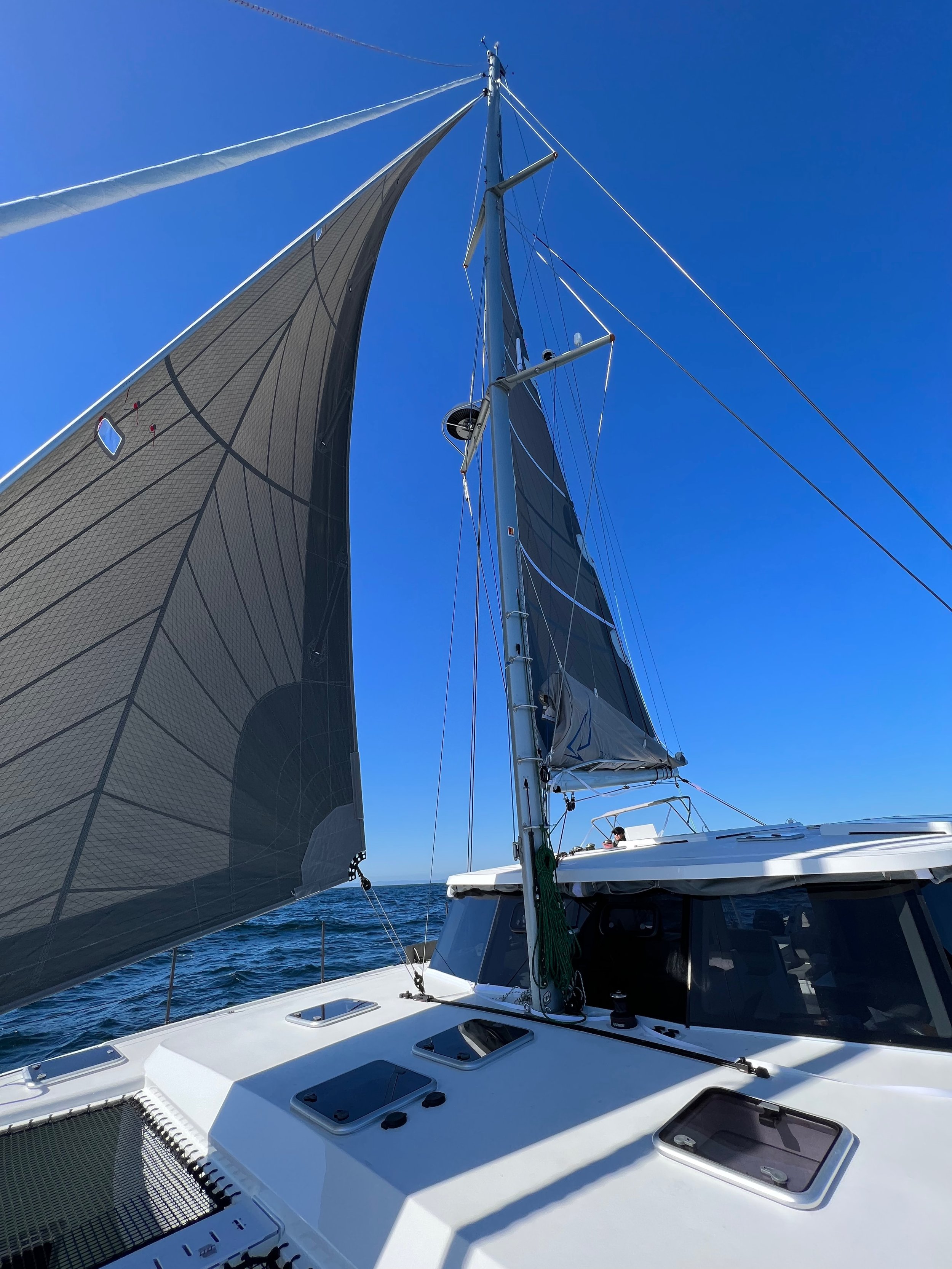



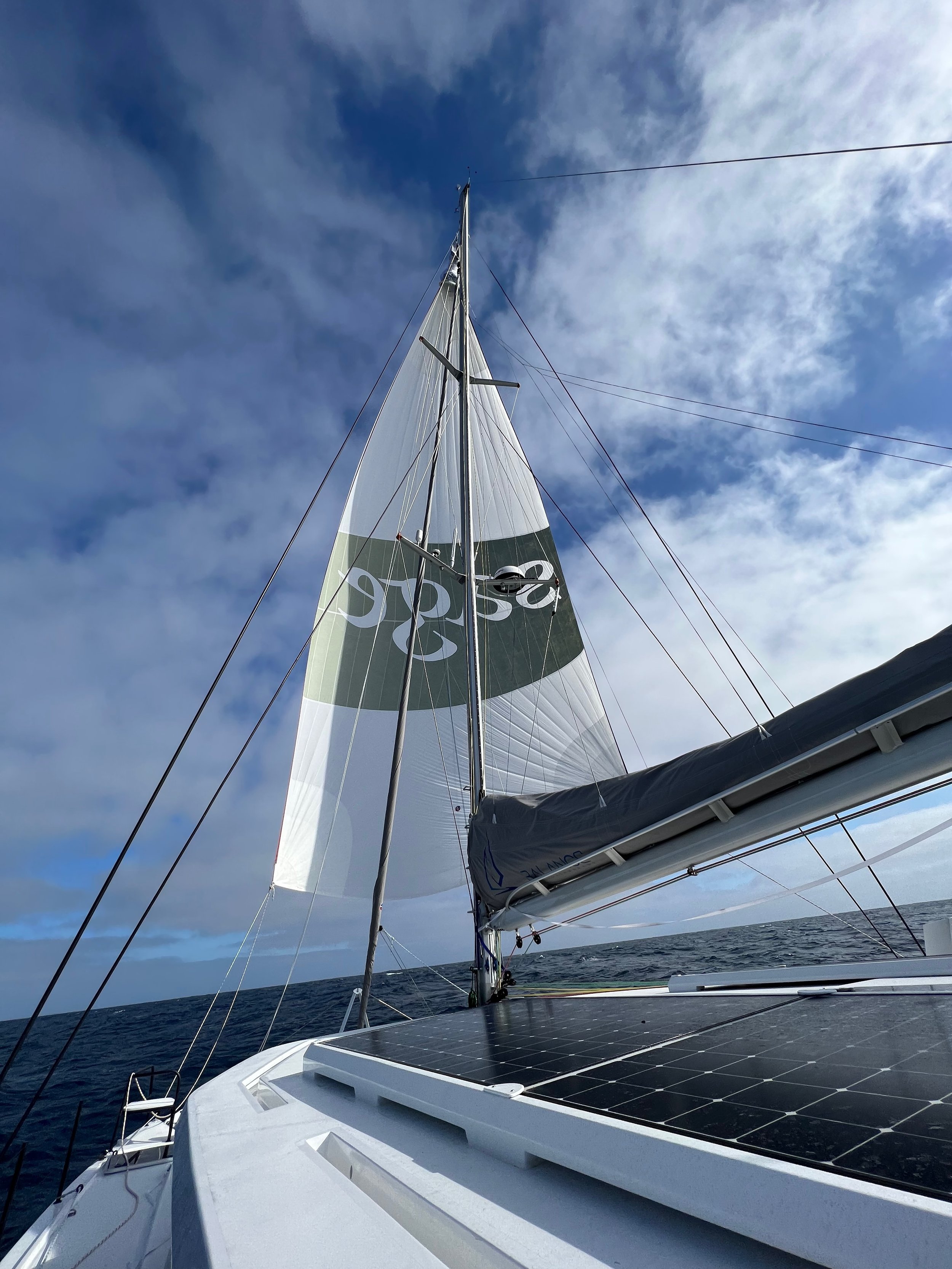

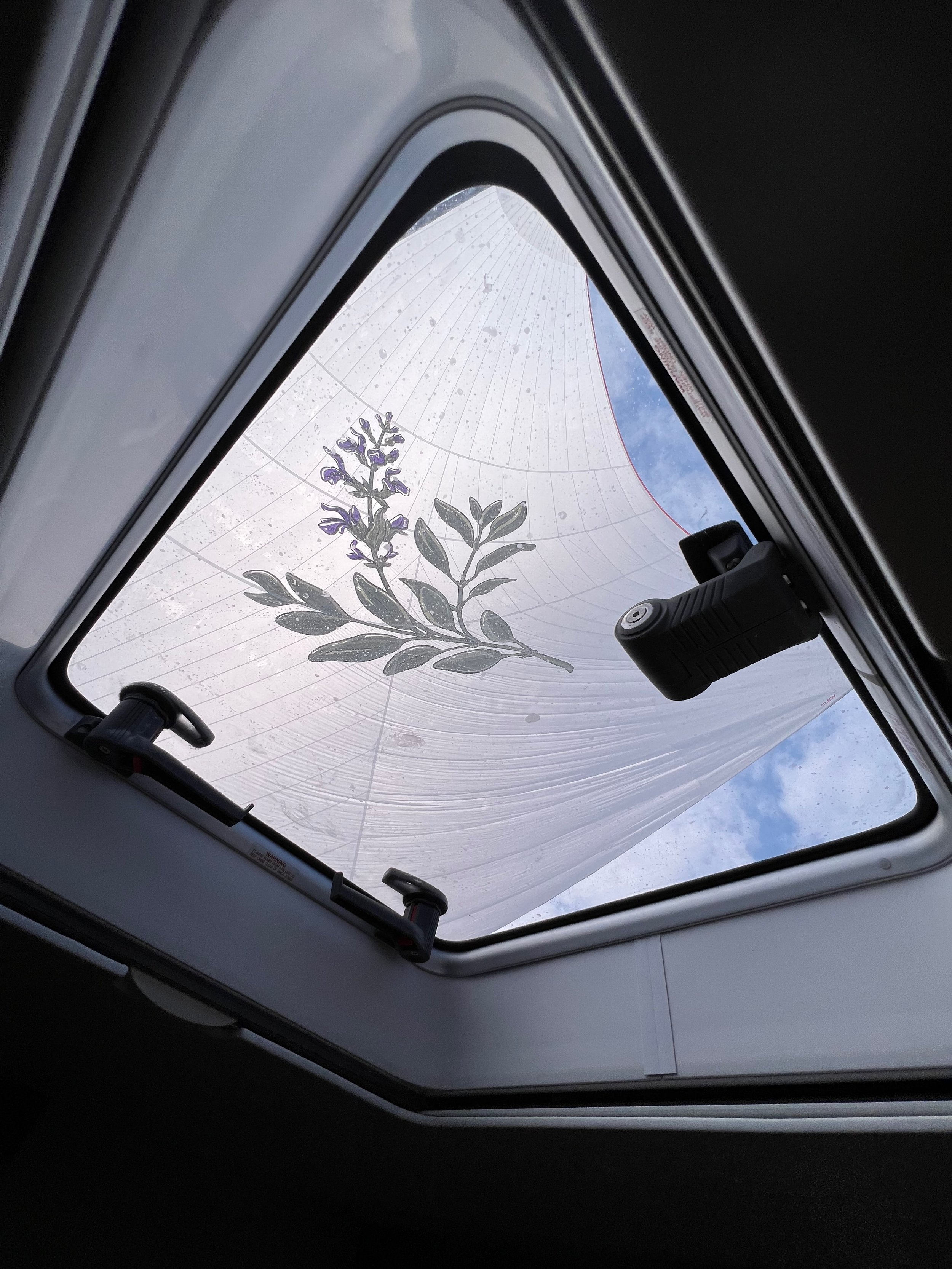
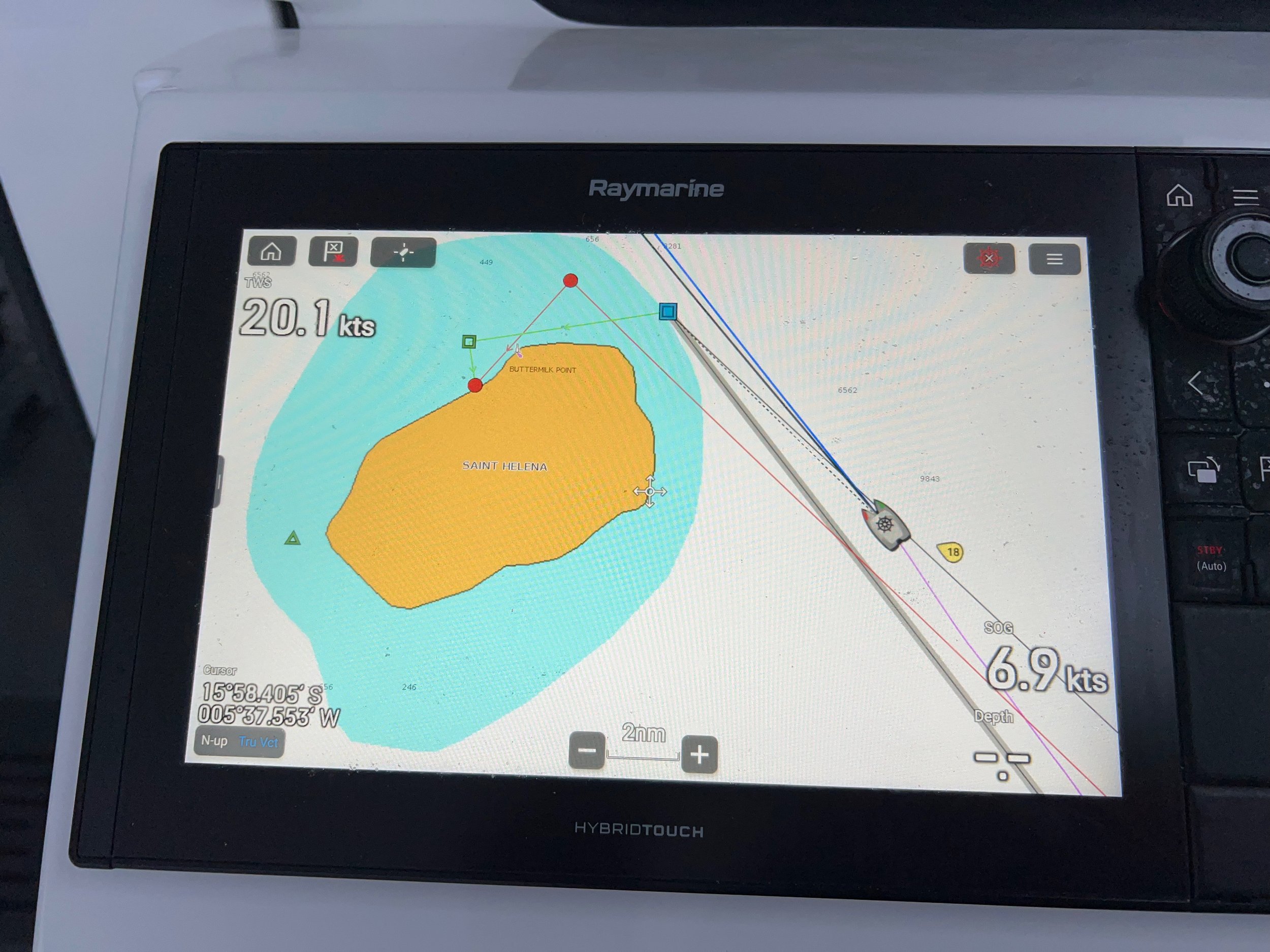
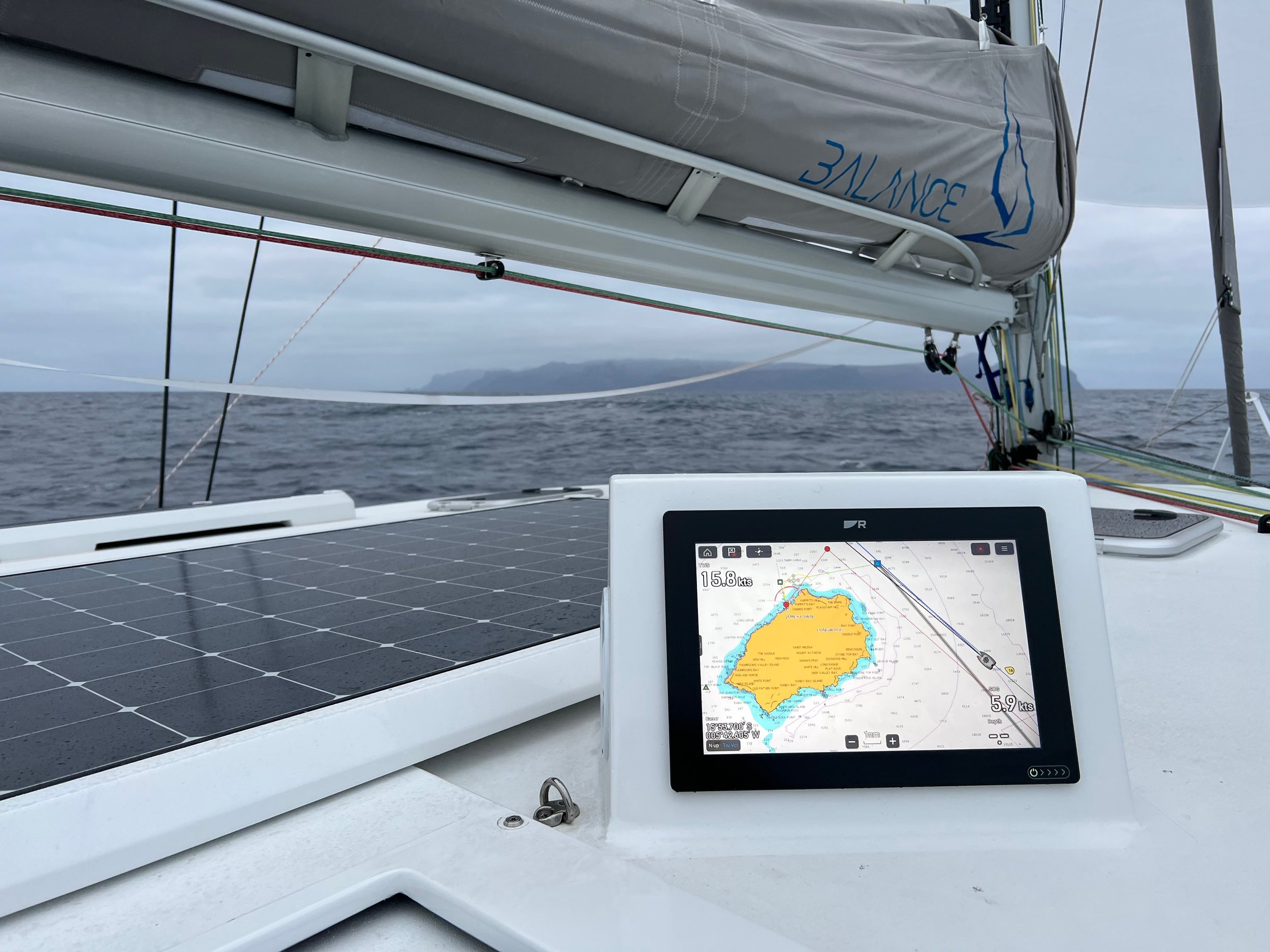
So, with the autopilot restored, but not wanting to make it work too hard, we put up the spinnaker with no mainsail. This allows the boat to move well downwind, but not have a lot of weather helm for the autopilot to fight against. We have two spinnakers, a big one and a small one, and one of those two sails would be up for the rest of the trip to St. Helena. On September 21st, the 12th day at sea Emmy spotted St. Helena at 01:00 GMT in the morning.
It’s always strange how long it takes to get to land once you’ve seen it. Like a kid on the day before Christmas, time seems lengthened by the anticipation. Anticipation of seeing greenery, and of standing on solid ground, and of eating at a restaurant, and of a full nights sleep. We finally made it to the anchorage at about 11:00 GMT.
Checking in with he port captain we were told to take any yellow mooring buoy and radio back when we were secure. He mentioned that, because it was Wednesday and the island is keeping to British tradition, all stores and banks and the immigration would close for the afternoon, so we should plan on getting ashore asap to clear in. Welcome to the delightfully quirky island of St. Helena.